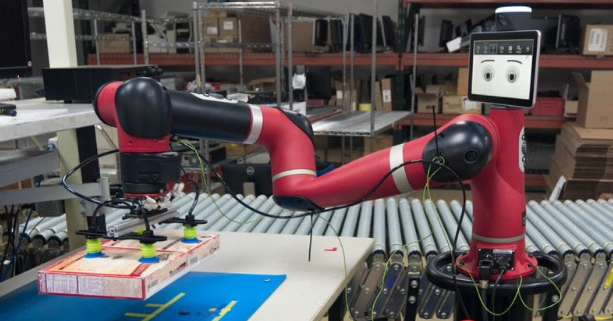
Logistics is among the fields that have been making impressive advances within the last decade. Despite challenges and disruptions in supply chains caused by the pandemic and a wide array of handicaps, logistics is seemingly set for developing and becoming more productive year by year.
More than half a year into 2022, it is now possible to illuminate the trends that have put down roots and are widely followed by the industry. Let’s look at what the field has relied upon and what will remain in the spotlight.
Personalization
With the competition in the industry becoming more fierce, corporations seek to keep their old clients and increase the inflow of new ones. It’s often done by companies’ branding and a personalized approach to customers. Discounts, individual deals, and cutting-edge technologies to show clients the delivery process are the three building blocks that empower logistic businesses to tap into entrepreneurs’ wants.
Besides, social media has proven efficient in increasing brand awareness, generating profits, and maintaining good relationships with the audience. Networks like Twitter or LinkedIn allow cargo companies to describe their operation areas and demonstrate their expertise in the field through blogs and informative articles. After all, it is not surprising the social media trend has barged into the logistics industry; running a profile is cost-effective and profitable, though it needs well-thought-out branding. The latter is easily fixable with this fantastic online icon maker. The resource also provides tools to let corporations bolster the visual aspect and forget about it once and for all.
Artificial Intelligence & Machine Learning
Should logistics be described with one adjective, it would be nothing but productivity. Without being efficient, the company will lose its customers quickly. While Artificial Intelligence and Machine Learning are not nearly new technologies, the industry widely adopts them these days, and that’s not for no reason. AI and ML help level off abrupt surges in demand and mitigate issues with the supply chain. Using various algorithms and calculations, AI and ML generate multiple ways to resolve problems and ensure the shipment comes with no delay. In addition, these technologies improve warehouse organization, boosting inventory processes, packing, picking, and reducing turnaround times.
Decentralization & Blockchain
Keeping company and client data under lock and key is no easy task. Still, with the recent data violation cases, every corporation puts tremendous effort into securing personal information and deterring potential breaches. Decentralization and blockchain are two things hitting the scene these days, reassuring that the data is scattered around various places, is protected, and always available. The blockchain is a rapidly developing technology rolling out new features to boost security and navigability. And although it’s not cheap, blockchain technology doesn’t push the logistics away from using it. Besides security, the blockchain ensures complete transparency so that the users can quickly learn the product’s lifecycle information.

Enhanced and sustainable last mile
The last mile has proven to be one of the supply chain’s most costly and troublesome components. The logistics corporations spend tremendous resources to deliver the product, especially with the increase in gas prices and skyrocketing inflation. Companies like DHL have jumped on the bandwagon of electric vehicles, electrifying plenty of last-mile deliveries (60% by 2030). Not only will electric cars reduce costs, but they will also contribute to the zero-emission ecosystem which will prevail in the future.
The sharing economy
As a result of the pandemic, the logistics started leaning toward versatility and mutuality. Investing considerable resources in maintaining the entire supply chain is no longer an option to thrive and network. The sharing economy allows corporations to save enough resources by exchanging people, data, and assets. One may find it utopian and too hard to believe, let alone utilize the model. And it’s partially true. However, the trend is only in its preliminary stage, which already demonstrates its efficiency if implemented correctly. Corporations cooperate, sharing transport, technology, and storage to hone the supply chain and make it more smooth-flowing.
Robotics, automation, and standalone options
As technologies progress, adopting more advanced systems becomes imminent, letting the logistics perform numerous steps tracking them and taking safety measures. The industry has been among the trailblazers in using automation and robotics. Given the challenging circumstances where the shortage of drivers looms over the horizon, transforming the supply chain and making it less human-occupied will soon be inescapable.
As can be seen today, the opportunities to meet this goal are many, from short-distance vehicles and unmanned aerial vehicles (UAVs), widely known as drones, to full-fledged self-driving trucks. Other than filling the gap of the driver shortage, new technologies will open up a new level of cost-effectiveness, safety, and efficiency.

Logistics is on the lookout for new ways to improve delivery
Companies with multilayered logistics and diverse supply chains keep their eyes wide open, searching for new approaches that can help them make the delivery process better and faster. While the following list is far from exhaustive, the mentioned trends are the most promising.
Be that as it may, it’s crucial to continue looking for new ways to commit to the industry’s development. Delving into predicting what trends will persist is burdensome and unnecessary, as what works for one company may turn out ineffective for another. More importantly, the industry will keep integrating new methods and technologies. All we can do is track the field to see what we can consider a trend.





